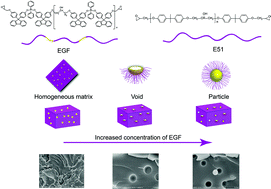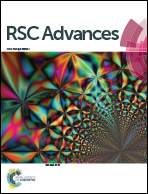Morphology control of porous epoxy resin by rod-coil block oligomer: a self-assembly-induced phase separation by diphenyl fluorene-modified silicone epoxy
Abstract
Self-assembly of amphiphilic rod-coil polymers into well-ordered structures has attracted significant interest over the last decade. An especially attractive application of rod-coil polymer self-assembly is the formation of porous materials. A major problem in this process is the expensive synthesis of well-defined block copolymers, and the difficulty of up-scaling for industrial applications. In this study, a robust and economical synthesis route was successfully proposed to prepare a new amphiphilic rod-coil block oligomer combining flexible silicone and rod diphenyl fluorene segments other than diblock copolymers. Porous epoxy monolith was prepared via self-assembly-induced phase separation using silicone epoxy modified by diphenyl fluorene as a porogen. The morphology of the cured resin was examined by SEM and the compatibility and phase separation were studied by SEM-EDS. The results showed that the pore structure of the cured epoxy monolith was controlled by the concentration of the porogen, but the average pore size remained stable. The uniform voids and particles dispersed in the epoxy matrix are of the order of 1 μm or larger.


 Please wait while we load your content...
Please wait while we load your content...